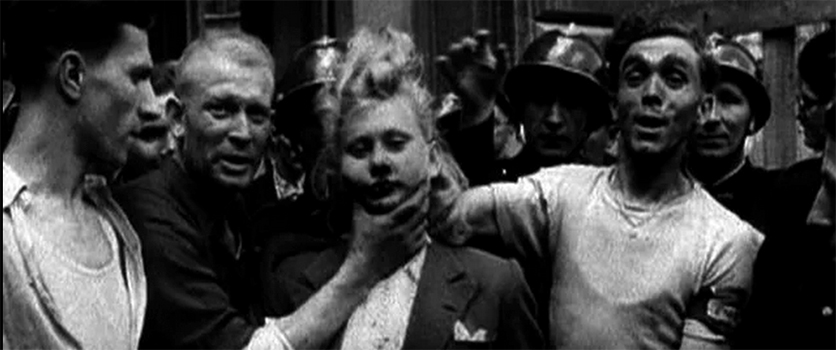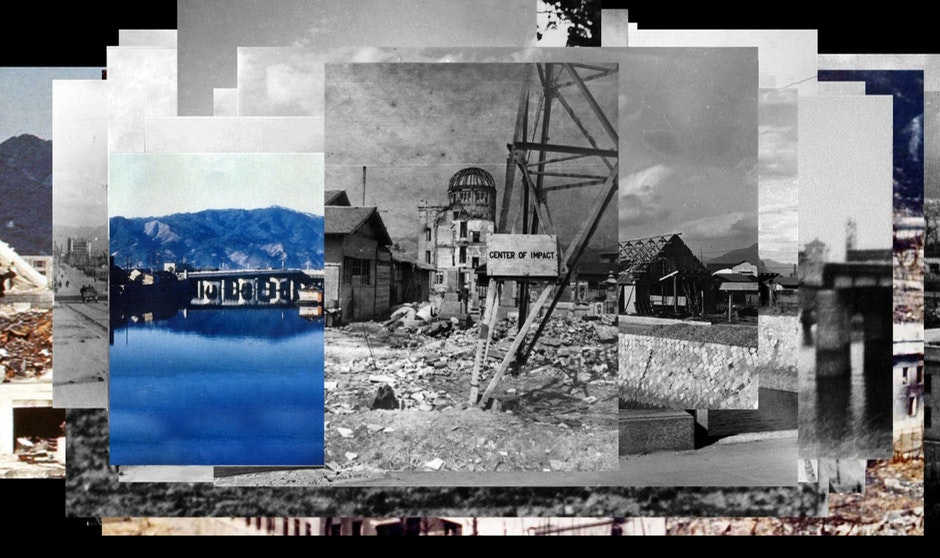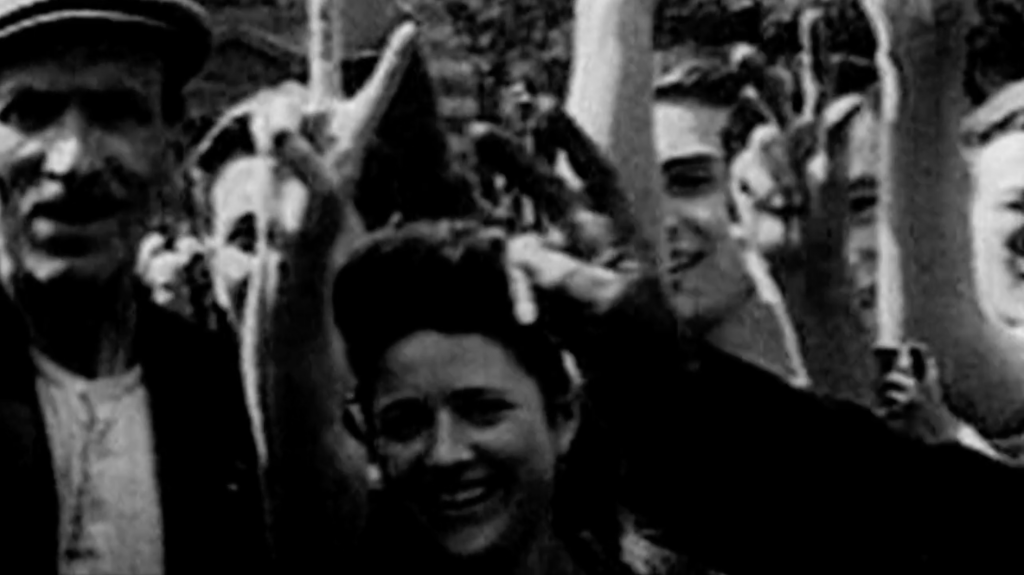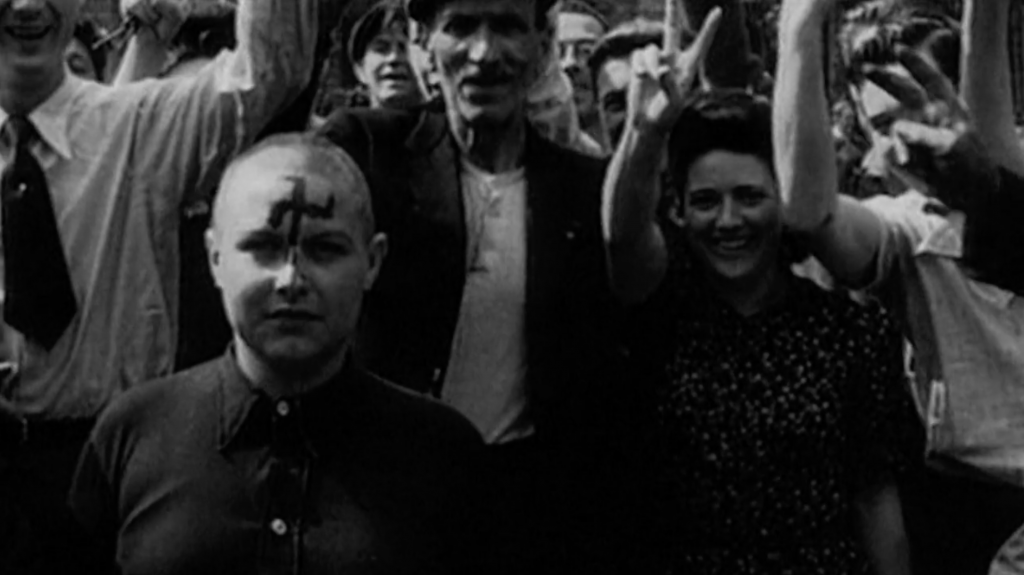
Balkan Diskurs correspondent Struan Kennedy provides a review of three films that were recently shown at Ars Aevi Museum of Contemporary Art in Sarajevo as part of a retrospective of the work of French filmmaker Jean-Gabriel Périot.
Balkan Diskurs correspondent Struan Kennedy provides a review of three films that were recently shown at Ars Aevi Museum of Contemporary Art in Sarajevo as part of a retrospective of the work of French filmmaker Jean-Gabriel Périot.
Jean-Gabriel Périot was born in 1974 in Bellac in western France. His enthusiasm for archives (both visuals and sound), as well as an interest in history, started when working at the Pompidou Centre after his studies. Here, he discovered how to play with the potential of archival footage as rich materials allowing him to develop new stories. Before beginning a career in cinema, he had predominantly worked with lighting installations. His films are research driven and take a historical look at the nature of various types of violence. Often, films will be edited at a very fast pace, these ‘supercuts’ create strange, almost abstract interpretations of real events.
There are several additional techniques that relate to key themes in his practice also merit exploration. Firstly let’s consider a fundamentally important choice in most film-making: music. Périot makes effective use of a wide range of music appropriated for his creative means, often dramatically representing the sound in a startling context. In ‘200,000 Phantoms’ (2007) the plaintive piano in ‘Larkspur and Lazarus’ by Current 93, is fittingly subdued given the solemn subject matter – the Hiroshima bombing. This minimalist score is later joined, not so much by conventionally sung lyrics, but rather softly spoken word. Since the film focuses on a fixed subject matter – the Genbaku Dome, the only building to withstand the devastating blast – the words could be heard as a survivor’s testimony. Through personification, Périot literally gives the dome a voice, full of world-weary recollections and resigned isolation:
‘The empty streets
The songs of twilight
The clouds at rest…
The faded pictures
Of faded lives…
The endless rain
In haunted airs…
I waited years for you’

At this intersection between architecture and memory, we receive an important lesson about legacy. Whenever these structures appear, the survivors tell us their story: we should listen. The film’s final words, though still melancholic, don’t look back in utter forlorn but rather look forward to an imagined future:
‘If I could have one wish
As in the fairy tales
I would unmake my past
And rise like Lazarus
And stand in sunlight
And banish all the dark
That locked my face away’
Elsewhere, Périot constructs an anarchic music video when bringing an effective combination of post-punk music and riot scenes in ‘L’Art délicat de la matraque’ / ’The Delicate Art of the Bludgeon’ (2009). By doing so he taps into a frenzied mixture of the fear, excitement and danger of such an event. Through music Périot also questions his homeland’s sense of pride and patriotism and even the national anthem, ‘La Marseillaise’, is not immune to scrutiny in ‘Eût-elle été criminelle…’ / ‘Even if She Had Been a Criminal…’ (2006). Throughout the World War II portion of the film, which interrupts the previous scenes of imperial glory and decadence, the anthem fades and the notes are drawn out, suggesting both the suspension of reality and the relentless futility of military campaigns. Only when victory is declared does the anthem resume but by then, as we will later see, Périot has significantly altered our perceptions of this music.
Another interesting editorial technique Périot makes use of is time-shifting. Whether this is a long series of gradual layering, as in the many still images of the dome in ‘200,000 Phantoms’ conveying a slow passing of time or rapid shifts in quick cuts synchronized to a thrashing soundtrack. The latter is featured in ‘L’Art délicat…’ and here Périot seems to describe and examine a certain police sensibility. With repeated close-ups, the act of bludgeoning morphs into some brutal ‘dance’: just another movement within the wider bodily orchestration of a riot. These mass groupings of both demonstrators and police give shape to some choreographic relationship played out across major social issues. In an oddly literal definition of ‘the movement’, the film demonstrates that it takes two to tango: the powerful and the powerless. As we watch history flicker back and forth, the time-shifting makes one thing abundantly clear, these two collective ‘dancers’ – the powerful and the powerless – have been locked into this dance for a very long time.
Another power relationship is explored when Périot turns the critical lens on his own country. The entirety of ‘Eût-elle été criminelle…’ could be aptly summarized as a before-and-after exercise. Those victory scenes mentioned earlier induced in me a relief, joy, even pride in our Allied success. When watching those smiling faces, waving flags and dancing in the street I returned a smile; my foot tapped along to the melody of ‘La Marseillaise’. But then comes the change. Women are paraded in front of us, heads held up to the camera, slapped repeatedly and their whole body is speaking a very different language. Yes their arms are up in the air, but not in celebration – in the unmistakable gesture of surrender. My heart sank when the revelation hit me; though I had seen these faces before, Périot had cropped them so I only saw the reaction, not the action that caused their happiness. This partial representation lured me to the assumption that their joy was produced by the war coming to an end. Upon second viewing, the correctly enlarged frame now told the complete story – the crowds were cheering because of what they were doing to these women.
As news of victory swept through France there was an inevitable delay in civil order being restored, but until official law could be brought back there existed a vacuum of accountability: a vacuum quickly filled by some people in France with their notion of ‘justice’. This is what the film presents to us, it documents the treatment of women suspected of conspiring with Nazi soldiers, which included public humiliation, physical abuse and ritualesque shaving of hair.
How the content had been morally transformed – only a few minutes earlier I related to the jubilant crowds, now they were strangers and their actions strange to me. I even heard the anthem differently, no longer did the famous clarion call of ‘Aux armes, citoyens!’ sound like a legitimate revolutionary demand for justice; it seemed an invitation to partake in dispensing this warped ‘justice’.
By simply considering these three works we can appreciate how Périot employs the editing techniques of soundtrack, personification, time-shifting and cropping to interrogate our understanding of the past. But any discussion of the past shadows our views on our present and our projections for our future. One salient point that we can draw out from Périot’s work is just how easy it is to doctor images and, correspondingly, how susceptible we are to believe what we are given. Now, more than ever is this the case with increasingly convincing methods of technology available. This has very real implications for all of us, from international peacebuilding to cornershop conversations. We have recently seen a slew of troubling phrases enter our media vernacular: ‘fake news’, ‘post-truth’ and ‘alternative facts’. These cannot be met with passive acceptance. A conclusion from these films is that we must all be vigilant against the deception and distractions of misinformation. In exercising a journalistic scrutiny we must thirst for the truth – the full frame of it and not some cunningly cropped approximation. This should be the revised rallying call that, like ‘La Marseillaise’, thunders out to all citizens.


The cropping of history: the partial truth vs. the whole truth. Stills from Périot’s ‘Even if She Had Been a Criminal…’ (Source: https://vimeo.com/11712366)
—
More works from Jean-Gabriel Périot are available here.






